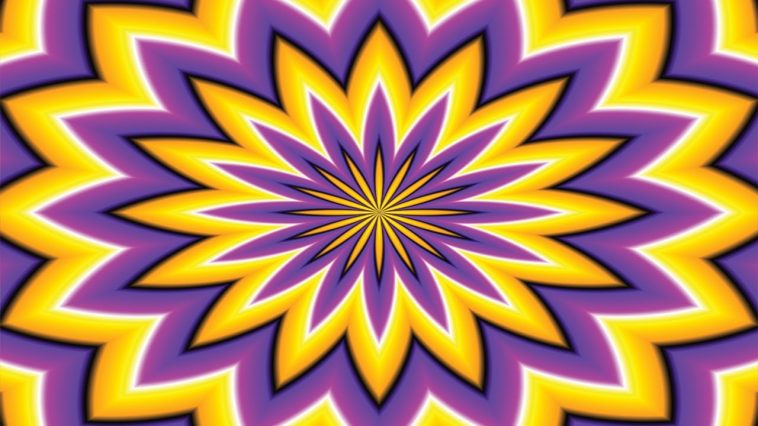What our brains do to understand what our eyes are seeing is incredible. Without that kind of on the fly interpretation we’d see everything upside down and wouldn’t be able to identify objects, shadows, depth, focus, everything would just be a mess of moving colors. But because of our highly sophisticated noodle, forcing us to interpret things in specific ways, so that we can make sense of them, it can sometimes have the opposite effect, leading to some rather confusing and peculiar optical illusions. Here are a few examples;
1, Same Color Illusion
In this illusion, squares a and b look both like different shades but are actually the same.
This happens because of how our brain identifies shadow. It’s actually interpreting the darker squares as the area that makes up the shadow, cast by an object.
But if we brake the ‘shadow’ concept, and stop our brains from confusing us for a while, then we see square B for what it really is.
2. The Intertwining Illusion
Rings or spirals? Well, they’re actually rings. Our peripheral vision doesn’t accurately keep track of all the visual details, and so in some situations like in this illusion, the visual system makes errors.
3.The Spinning Dancer
Which way is this dancer spinning? The answer is both! It’s all to do with what angle we think we’re seeing it from. If we imagine we’re slightly taller than the dancer, looking downward then the dancer appears to be standing on their left leg and turning clockwise. However, if we imagine we’re slightly shorter than the dancer and looking up at them, then they appear to be standing on their right leg, spinning counterclockwise.
4. After Image Illusion
Stair directly between the eyes of this black cat and try not to blink until the screen changes. This following illusion relies on the photoreceptors in your eyes becoming overtaxed from staring at this high contrast image Bobby (the cat) for a long time. When the black screen does appear, start blinking rapidly while continuing to stare in the middle of the black screen. You’ll soon notice that the image of Bobby is still there but inverted! This works because the overused photoreceptors that you’re overtaxing, while staring at our feline friend, that are taking in this negative image become overrun by their unused counterparts.So the opposite of this image (or the positive version) is produced in the visual cortex. Ready? GO! Isn’t he cute…
5. Peripheral Drift Illusion
These circles are actually not moving. It’s know exactly why this happens but some theories suggest small, rapid eye movements are responsible for aiding the illusion. If you focus your gaze very intently on one spot of the image, the motion will stop.
6. The Green Dot
There’s no green dot? But wait, stare at the cross in the middle while trying to look at the disappearing dots around the edge using your peripheral vision. Ta-da! A green dot momentarily appears in place of the purple one! But that’s not all…Stare longer and you’ll start to see that the purple dots start to disappear and all that remain are the green ones!? There are two things going on here:
1, The green dot appearing because of the after image effect (remember the cat?)
2, The dots disappearing is due to something called the Troxler’s effect. Basically this effect causes things in peripheral vision to fade and disappear after a while of staring at one point.
7. Force Perspective
This is a field widely used in cinematography. Depending on where you place the subjects in relation to the scenery and camera, you see an entirely different thing.
8. Rotating Rings
Stare at the dot in the middle and move your head closer and further away, notice how the rings appear to move? That’s because your brain is being fooled, (fool) constantly trying to ‘fix’ the conflicting information it’s seeing. The shapes in the smaller ring conflict with the shapes and shadowing in the larger ring.
9. Flashed Face Distortion Effect
Keep your eyes on the cross in the middle. Notice how the faces are starting to become distorted?
The effect seems to depend on processing each face in light of the others. By aligning the faces at the eyes and presenting them quickly, it becomes much easier to compare them, so the differences between the faces are more extreme.
10. Moving Images
You’ve been fooled all along! You haven’t been watching moving images at all, you’ve been watching still frames, played back usually at a rate of 25 images per second. Yes the whole time your brain was actually only seeing just a bunch of still images, one after the other, creating the illusion we all know today as video.
